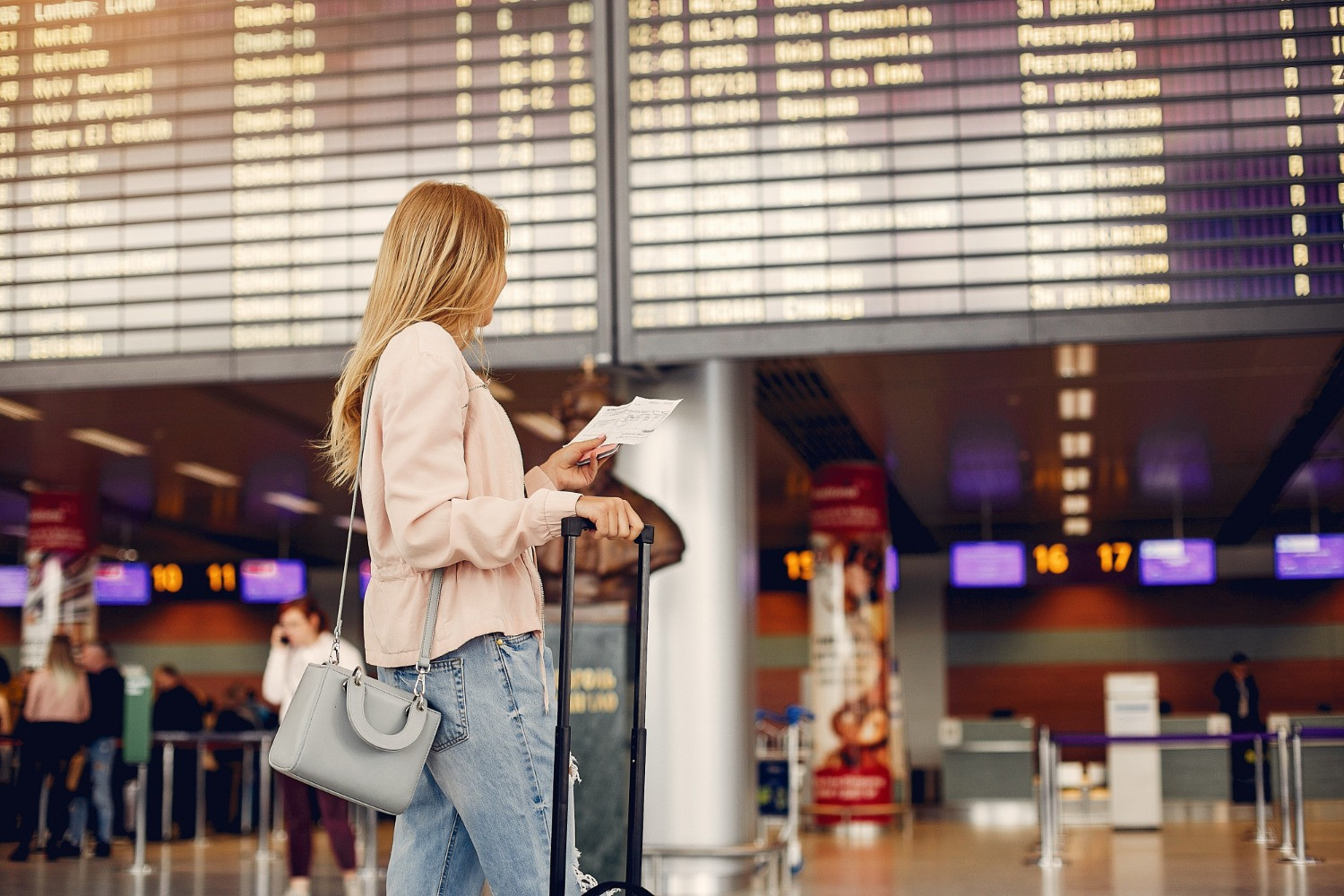Precautions to take when preparing for air travel
It all starts at booking . To find the most affordable price, you can use a flight comparator to obtain a wide choice according to your destination and travel dates. When faced with the different offers from airlines, you need to study not only the price, but also the other criteria, so that you don't end up with extra options to pay for when you get there.
Once you have entered your personal details and paid, you will receive confirmation of your booking by e-mail, together with all the necessary information.
Depending on the airline's procedures, you cancheck in online in advance, for a fee, or free of charge 48 hours before your flight. This step is generally not compulsory, but it saves you time by directly obtaining your boarding pass to print out. It's also a way of avoiding overbooking.
Before heading to the airport, you'll need to prepare your luggage. There are a few things you should bear in mind:
- The identity documents required for air travel may vary depending on the destination (identity card, passport, visa, residence permit, etc.).
- Size, weight and dimensions are regulated by the airlines; not all use the same standards.
- Some items are prohibited for safety reasons, while others are authorized in carry-on baggage under certain conditions and/or in the hold only.
Getting your bearings on arrival at the airport
With your luggage and flight documents, it's finally time to head for the airport. To make it through the remaining steps to your seat with peace of mind, you need to arrive well in advance. On average 1 to 2 hours before take-off for a domestic flight, and up to 3 hours in advance for a long-haul flight.
Good to know: some airports have more than one terminal, so it's essential to know in advance where your plane will be taking off from.
The airports all have a more or less similar configuration, with :
- Departure halls,
- Arrival halls,
- Check-in counters,
- Security posts,
- Boarding gates,
Go tothe check-in counter for your flight, following the instructions on the welcome screen.
Checking in: the registration stage
If you have no checked baggage and have already printed your boarding pass, you can skip this step.
On the other hand, if you need to collect your boarding pass and check in your baggage, you'll need to go to the check-in counter. A queue can form at this first point, as not only passengers on your flight, but also people traveling to other destinations also pass through this stage. Take this opportunity to prepare your plane ticket or your booking number and your identity documents.
The agent will check you in and issue your boarding pass. You must also present your checked-in baggage at this counter. A number of checks are carried out, notably concerning weight and dimensions. If your baggage exceeds the standards set by the airline, you will have to pay an additional fee.
Good to know: you're allowed to take one piece of hand luggage and one satchel or handbag with you on the plane. Once again, check the weight and size limits.
Passing security checks
Depending on the size of the airport, waiting times can vary.
The safety check is carried out as follows:
- Present your flight documents;
- You hand over your cabin baggage to the security agent for an X-ray scan, having taken care to set aside electronic devices (laptop, tablet, camera, etc.) and liquids (permitted in containers of less than 100 ml placed in a case);
- Place all metal objects likely to cause the detection system to ring, such as belts, watches, bracelets, rings, necklaces, keys, etc., in the plastic bins provided;
- The security guard may also ask you to remove your jacket, scarf and shoes;
- You then pass through the security gate: if it rings, you must submit to a search;
- Finally, you collect all your belongings before making your way to the boarding gate.
Find the gate
Refer to your boarding pass. The terminal is indicated by a letter and the gate by a number.
This information is also available on the notice boards. If in doubt, ask airport staff for confirmation.
While you're waiting at the gate, you can enjoy a hot drink or browse a duty-free store. But be careful not to stray too far, and keep your ears open for the various announcements.
Boarding begins on average 30 minutes before takeoff. It is announced over the loudspeakers and begins with first class, business class and priority passengers (disabled). Sections are then called up by seat row.
Once again, you'll need to present your flight documents, then follow the other passengers down the aisles until you reach the tarmac. Once on board, all you have to do is find your seat, stow your baggage and follow the flight attendant's instructions until takeoff.

